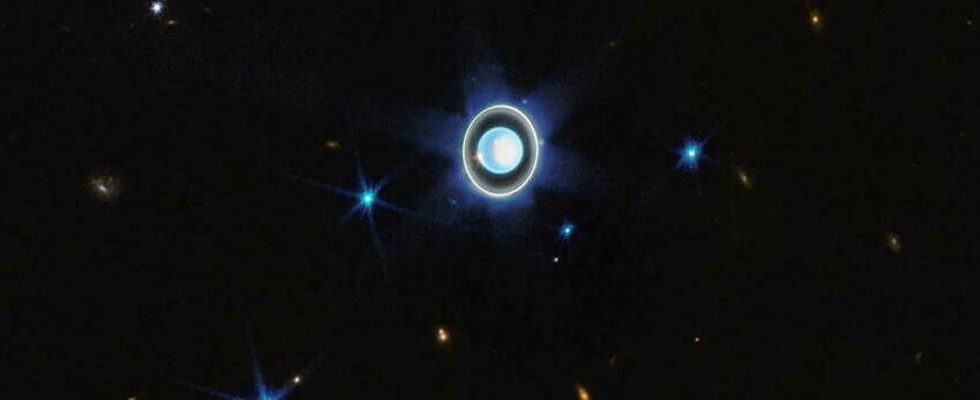This image, which shows never-before-seen details of the ice giant and its rings, is just a taste of what the telescope will discover about it.
By Chloe Durand-Parenti
© NASA, ESA, CSA, STScI. Image processing: J. DePasquale (STScI)Outreach / STScI
Published on
Subscriber-only audio playback
VS’is a sumptuous and rare image that NASA has just unveiled. Taken by the James-Webb space telescope, it shows the planet Uranus, some of its twenty-seven moons and especially eleven of its thirteen known rings, shining with a thousand lights in infrared. Objects that all evolve at a distance of between 2.58 and 3.15 billion kilometers from Earth, Uranus being four times farther from our star than Jupiter!
Thanks to the sensitivity of the new space observatory operating in the infrared, we can even detect very tenuous rings of dust which had so far only been immortalized by the Voyager 2 space probe – which flew over Uranus in 1986 – and the Keck Observatory, located more than 4,000 meters above sea level on Mount Mauna Kea, Hawaii.
In addition to these rings, we also discover new details of the giant ice planet, about four times larger than Earth and fifteen times more massive. If it is called an ice giant, it is because it differs in its composition from the classical giants Jupiter and Saturn. Indeed, if the latter are mainly composed of hydrogen and helium, Uranus, like Neptune, would be made up of more volatile elements such as water, ammonia or even methane. Moreover, the seventh planet of the solar system (starting from our star) behaves in a very singular way since it is much more inclined than the other planets: it rotates leaning on the side of about 90 degrees with respect to the plane of its orbit. That is to say if its climate is extreme!
READ ALSOThe improbable ring of the would-be dwarf planet Quaoar
A mysterious summer polar ice cap
Currently, it is late spring at the North Pole of Uranus. On the new image, we can very clearly distinguish a kind of polar cap which intrigues scientists a lot because it appears mysteriously in summer to disappear in autumn. Although this polar cap is already known, James-Webb reveals an astonishing aspect of it: by looking closely at the photograph – in close-up – we see an even lighter zone underlined by a slightly darker halo. As for the atmosphere of the planet, of which James-Webb reveals the dynamic nature, we see two brilliant clouds which specialists believe are linked to storms: one of intense brightness on the left part of the cliché and the other standing out in a less spectacular way on the edge of the famous polar cap.
READ ALSOStorming Titan, New Promised Land
The image caused an even greater sensation among astronomers as it was obtained after an exposure time of only twelve minutes and using only two filters! The room for progress is therefore significant and the scientists expect to be able to see many other structures, such as the other two very faint outer rings of Uranus discovered by Hubble in 2007. They also hope to be able to follow the way in which evolve over time the clouds detected here, by regularly observing the planet. This should be possible without any problem knowing that Uranus was identified last April by the American Academy of Sciences as a priority exploration target for NASA over the period 2023-2032.
